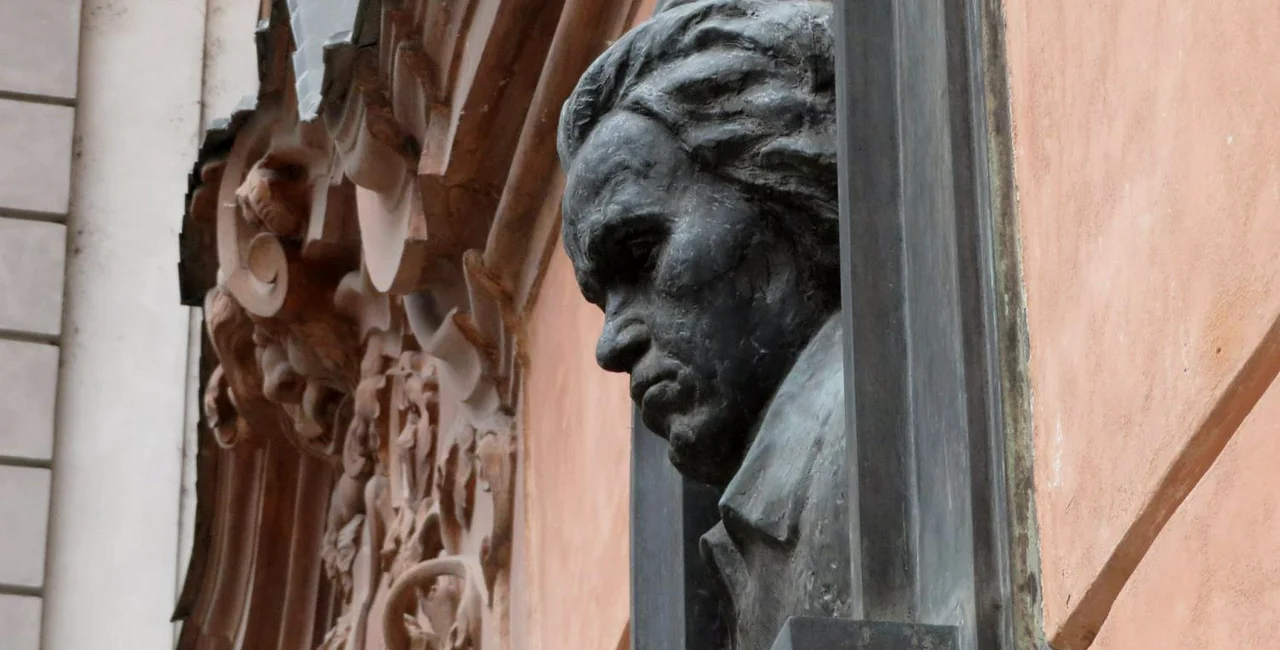The longer you live in Prague, the more amazing facts about the city you discover. While movement in throughout the city is currently restricted, we can still reflect on its many wonders.
We’ve put together a few musical facts about the city, covering over 230 years and multiple genres.
Mozart: We all know Mozart conducted the premiere of the opera Don Giovanni at the Estates Theatre on October 29, 1787, and many know that Miloš Forman’s biopic Amadeus was filmed here. His exploits in the Golden City could fill a book, so we picked a few more obscure items.
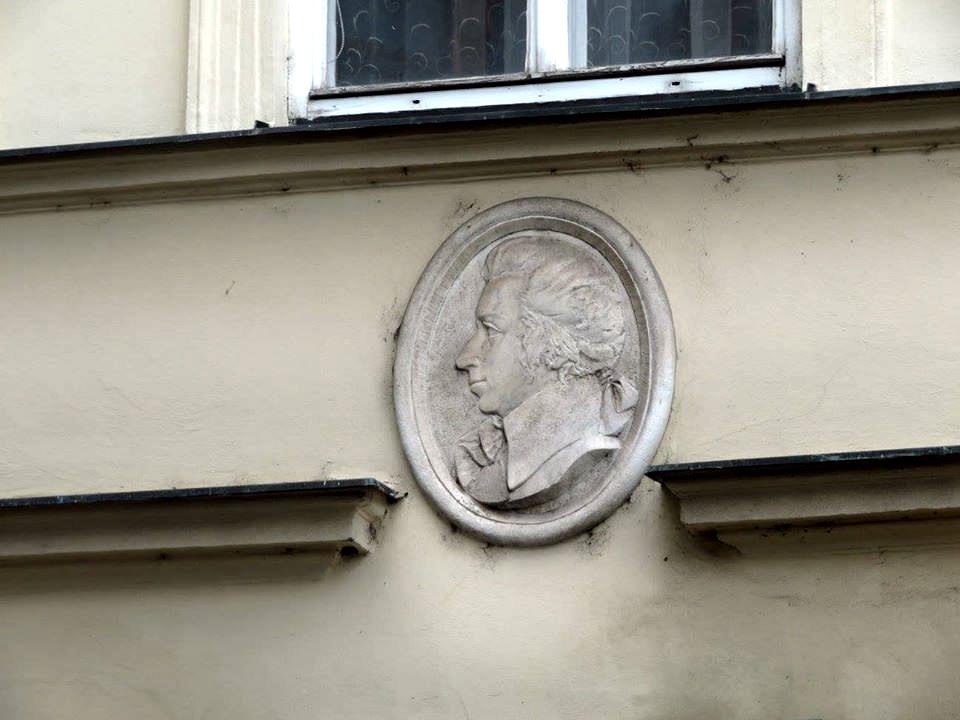
Prague was the first place where Mozart had a coffee, at some place on Templová street. He was so impressed with the beverage that me made a note in his diary. This was during a trip in January and February 1787, when he stayed at Thun Palace, which is now the British Embassy, in Malá Strana on Thunovská Street. A letter thanking his hosts is still in the possession of the embassy.
He also went to pubs on Štupartská Street such as the long-gone U Štupartsků and frequented the New Inn at Celetná 588, later called U Zlatého anděla, located near the Powder Gate.
Prague was also the first European city where a book about Mozart was published. In 1798, seven years after the composer’s death, František Xaver Němeček published a full-length biography, Leben des K. K. Kapellmeisters Wolfgang Gottlieb Mozart. “Gottlieb” is the German version of the Latin “Amadeus” both meaning “Love God.” A film called Gottlieb likely would have been less successful than Amadeus.
While Mozart and Antonio Salieri are depicted as rivals in Amadeus, in real life they composed a song together called “Per la ricuperata salute di Ophelia” (For the recovered health of Ophelia). It was long considered lost, but in 2015 a copy was was found in the archives of the Czech Museum of Music. It had been hiding in plain sight ever since the archives catalog was digitized and put online, but it took years for someone to spot it.
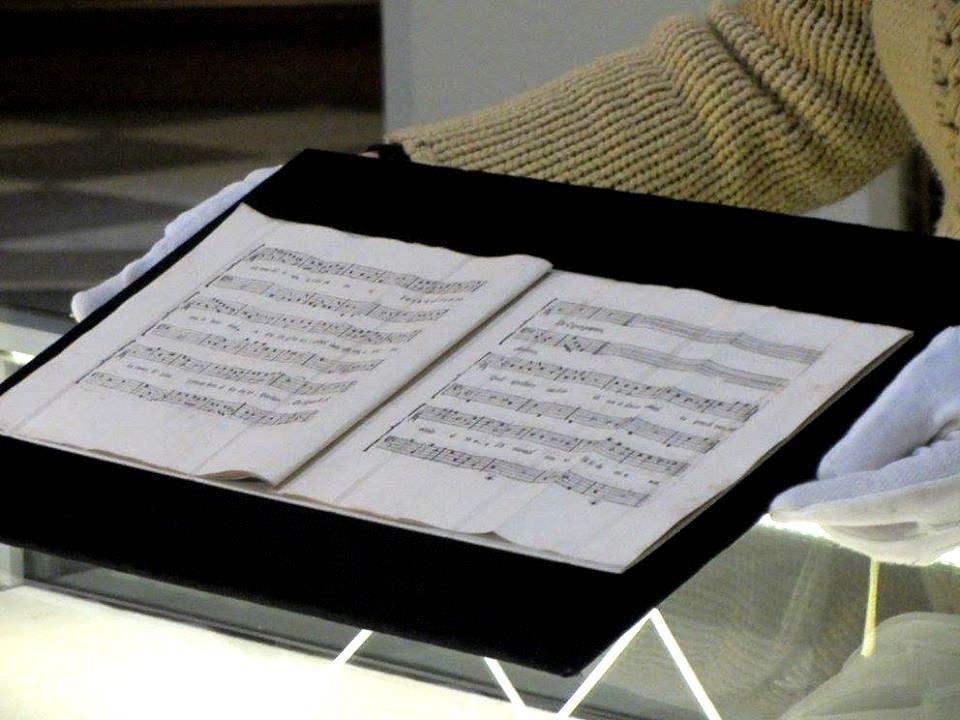
Beethoven: Little marketing is done to promote Beethoven’s connections to Prague. The famed composer visited the city at least twice. In 1796, he stayed at Lázeňská 11 — At the White and Golden Unicorn (U bílého a zlatého jednorožce) in Prague’s Malá Strana district has a plaque with a scowling face of the composer. The plaque dates to 1827, the 100th anniversary of his death. (2020 is the 250th anniversary of his birth.) He also came in 1798.
He gave private concerts in Prague at Clam-Gallas Palace. He also dedicated several works of music to Countess Josephine de Clary-Aldringen, who was already engaged to a member of the Clam-Gallas family. He took the 19-year-old countess as piano student, but efforts to win her heart were soundly rebuffed and he left Prague shortly after. By the time he returned in 1798 she was married.
While in Prague, he had his violin repaired on what is now Nerudova Street at the House at the Three Violins (U tří housliček). The building is still there, with an image of three violins above the entry, but it is not longer a repair shop.
The original manuscript for Beethoven’s Third Symphony, called Eroica, is in Prague Castle at the Lobkowicz Palace. Beethoven had originally planned to dedicate it to Napoleon but changed his mind and dedicated it to arts patron Joseph Franz Maximilian, 7th Prince Lobkowicz.
Another connection is that the composer often went to the spa in Teplice, Ústí nad Labem region, for his health. While there, the wrote a love letter that became the inspiration for the film Immortal Beloved, which was mostly filmed in Prague.
Chopin: A bust of Polish composer Frédéric Chopin can be found on the side of the Czech National Bank on Na Příkopě Street. The location used to be the Blue Star Inn (U Modré hvězdy), and the bust was erected in 1960 for the 150th anniversary of his birth, saying Chopin stayed there 1829–30.
But that is misleading. He stayed three days in 1829, met with people from the pan-Slavic movement, saw Prague Castle, and wrote in a letter that he was impressed with the view. He composed a small piece of music to go with some lyrics from a local poet, but declined to perform a concert, as the Prague audience was notoriously tough to please. He stayed one day in 1830, again declining to perform.
Lizst: Hungarian composer Franz Liszt made a grand entrance in Prague. He had been anticipated throughout early 1840, but never materialized. Then, there was the masked Mardi Gras ball at the Estates Theatre on March 3. When the masks were removed, Lizst was among the guests. He then played several times in various venues including Platýz on Národní třída. A young Bedřich Smetana was in one of the audiences.
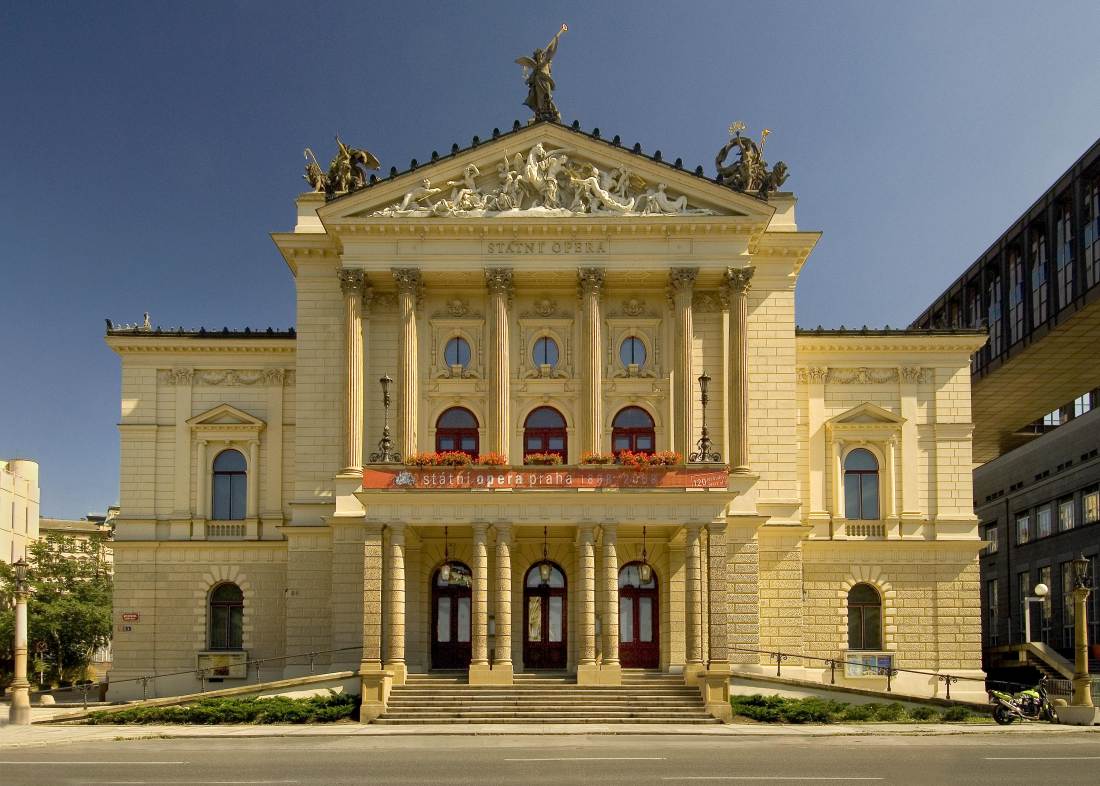
Caruso: Opera singer Enrico Caruso performed in Prague for the first time at the German Theatre (now the State Opera) in 1904, with two sold-out shows. He also began a long relationship with Czech opera singer Ema Destinnová, who performed with him in New York at the Metropolitan Opera and other international venues. But Destinnová was a Czech nationalist, and refused to marry someone who wasn’t Czech. Caruso would visit several more times, and the couple was even photographed together in 1911 at Langhans Studio in Prague. The glass negative has been lost. Destinnová is the face on the 2,000 CZK banknote.
Moody Blues: The British progressive rock band the Moody Blues were in Prague to film a French-German TV special called Europarty, and played “Nights in White Satin” on Charles Bridge, just a day before the Warsaw Pact invasion on August 21, 1968. Shirley Bassey was also in the show, and filmed scenes at what is now the New Building of the National Museum, Mama Shelter hotel, fountain at the National Museum and Národní třída. The British participants of the show were evacuated by British military planes.
Rolling Stones: The first really big act to play in Prague after the Velvet Revolution, the Rolling Stones put on a massive show in Strahov Stadium on August 18, 1990. The first song they played was “Start Me Up.”
Jagger became friends with then-president Václav Havel, and when the band returned in 1995 for the Voodoo Lounge tour, they paid $32,000 to redo the lighting inside four ceremonial halls of Prague Castle.
The system was designed by that tour’s lighting manager, Patrick Woodroof, and took three weeks to install. Jagger presented Havel with the remote control for the system. “It’s fantastic, no one has ever seen a room with 2,000 light bulbs, even when i do big rock shows I have 500 lights,” Woodroof said of the Castle’s Spanish Hall.
The general rumor has it that the Stones paid for the exterior lighting to Prague Castle, seen at night, but that seems to be a misunderstanding that has grown into an urban legend.
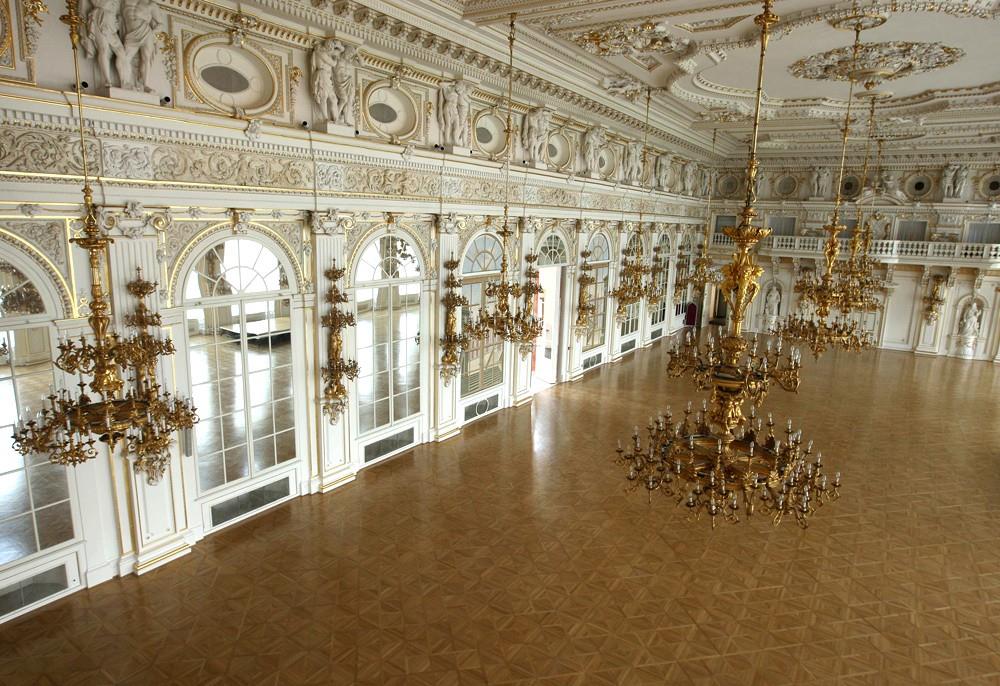
When the Stones were back again in July 2003, it was time for Mick Jagger’s 60th birthday. He booked out three clubs to keep paparazzi and fans guessing, but showed up at Duplex (before 1990 called Družba) on Wenceslas Square. He also had a small celebration at the British Embassy.
For die-hard Stones fans, in 1990 Havel’s wife Olga Havlová took the Stones to a restaurant called Na Rybárně at Gorazdova 17, behind the Dancing House. It is still open but is now a Vietnamese place called Origami, and it has a small photo display about the visit outside and a fairly good rating and food websites.
Frank Zappa: Another musician who made friends with Havel was Frank Zappa. He even played his next-to-last last concert here, on June 24, 1991, joining in with the Czech band Pražský výběr. His last public stage appearance was a few days later in Budapest.
The song “Plastic People” from the 1967 album Absolutely Free was the source name of the Czech dissident band The Plastic People of the Universe, whose arrest led to Charter 77 — the manifesto at the center of the opposition to the communist government. Zappa is seen as the godfather of the Velvet Revolution.
Zappa’s music, illegally smuggled in and sold on homemade cassettes, became synonymous with rock. Police, upon hearing any rock while wandering the streets would shout for people to “turn that Zappa off” regardless of the band.
Zappa first visited Prague in January 1990, and explained simple economic concepts like credit cards to Havel. Impressed by Zappa’s sincerity, Havel named Zappa to be Special Ambassador to the West on Trade, Culture and Tourism. Zappa, for his part, felt his experience in music made him a good deal maker.
US Secretary of State James Baker, serving under President George H. W. Bush, objected, and is alleged to have said: “You can do business with the United States or you can do business with Frank Zappa.” Havel and Zappa stayed friends until Zappa’s death in 1993.
INXS: If you want to see Prague just before the Velvet Revolution, you can check out the video for “Never Tear Us Apart,” which features INXS lead singer Michael Hutchence wandering through a fairly empty city center. A fan has made a Google map of the locations. That video, plus ones for along with “Guns in the Sky” and “New Sensation” were directed by Richard Lowenstein.
Nick Cave: Australian singer Nick Cave was in Prague in the early 1990s, and his apparently depressing time here inspired the 1994 song “Thirsty Dog,” named after a long-closed pub Žíznivý pes. The pub was located in Obecní dům and was only open for a year and a half before moving due to renovations. Other guests included Joe Strummer from The Clash and poet Allen Ginsberg.
Radiohead: The Prague metro announcement about closing doors can be heard on the opening of the 1998 song “A Reminder” from the EP Airbag/How Am I Driving? Apparently it was recorded at Jiřího z Poděbrad on the A line. The band also recorded the DVD Live in Praha at Holešovice in 2009, using fan footage.
Ritchie Blackmore: Guitarist Ritchie Blackmore is best known for his time with Deep Purple and Rainbow. With his current Renaissance-inspired act Blackmore’s Night he wrote a song called “Cartouche,” and the title refers to a medieval-themed restaurant of the same that used to be on Bílkova Street in the Josefov area. The song is on the 2003 album Ghost of a Rose.
David Bowie: Rock icon David Bowie played his next-to-last show in Prague, as part of the A Reality tour. He cut the June 23, 2004, show at T-Mobile Arena short, saying: “It’s just not working.” He had winced in pain while trying to clap over his head and eventually sat on a stool during the 16 songs, ending partway through “Changes.” Later, it turned out he had a blocked artery that required surgery. He did one more show at the Hurricane Festival in Scheessel, Germany and then canceled to rest of the tour. He only made one-off appearances for a single song or two after that.
The list of people to film videos in Prague is long, and includes Rihanna, Linkin Park, Ozzy Osbourne, Geri Halliwell, Kanye West and Jay-Z, Anastacia, Blur, Gwen Stefani, Human League, Killing Joke, R.E.M., Sinply Red, and Velvet Revolver, among others.












 Reading time: 9 minutes
Reading time: 9 minutes 